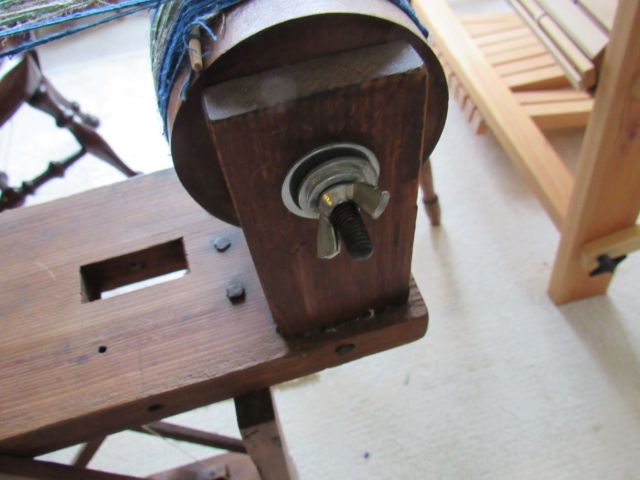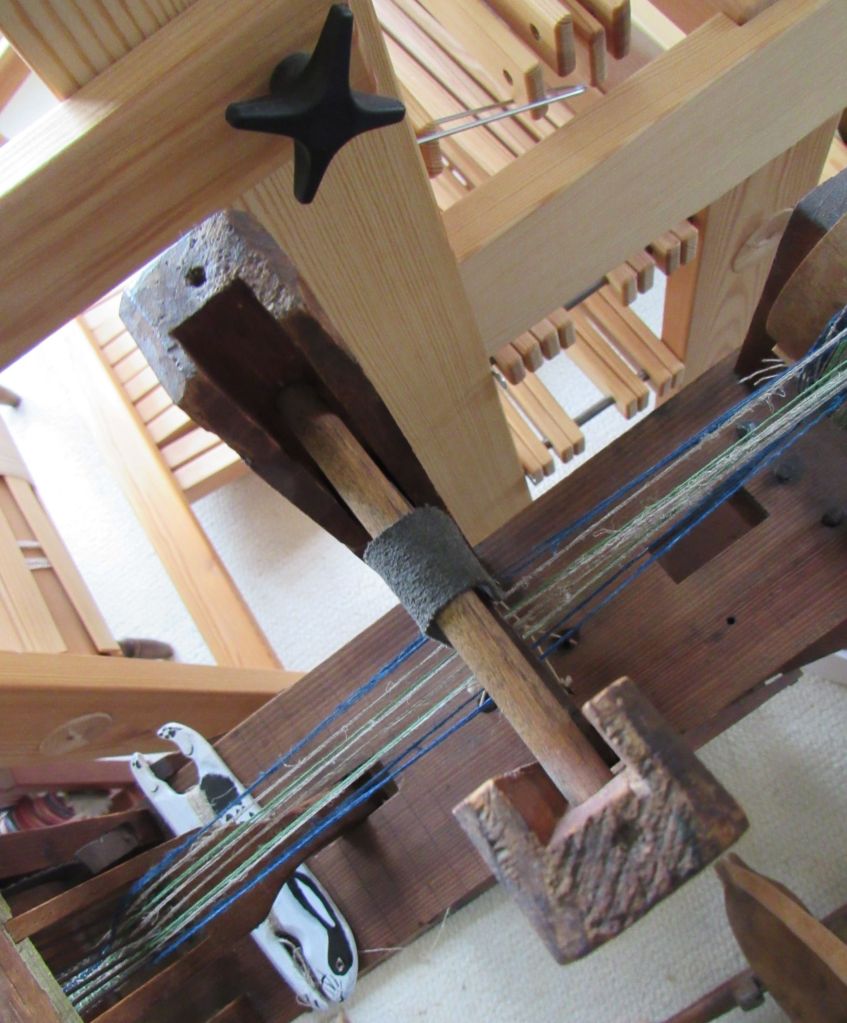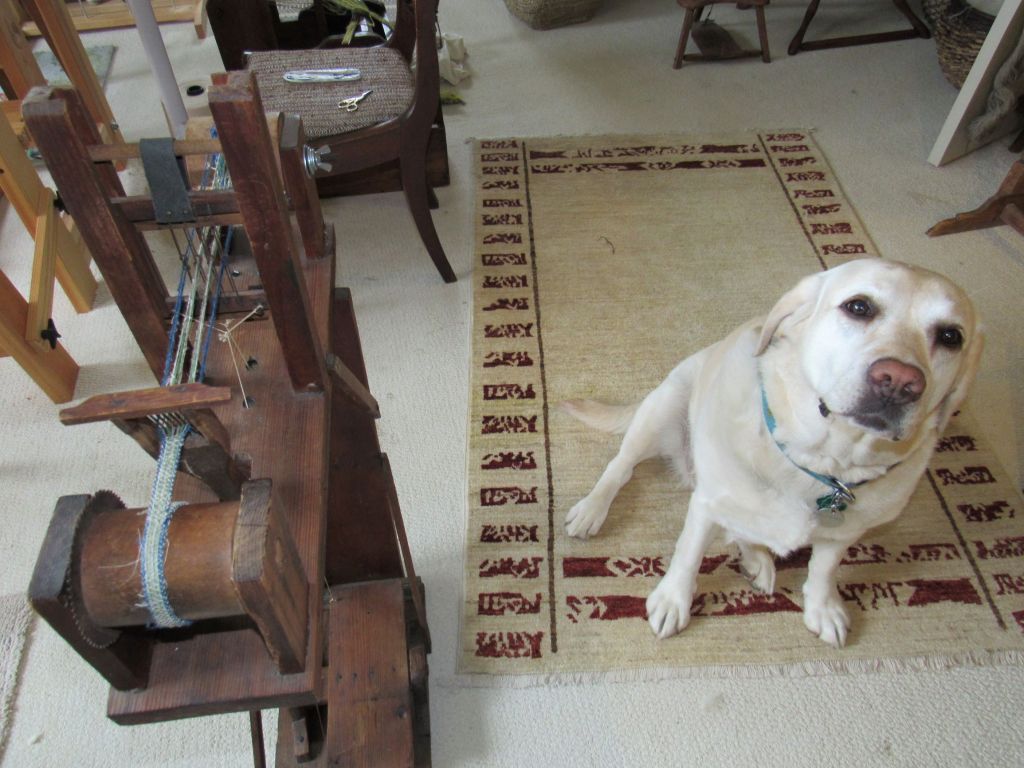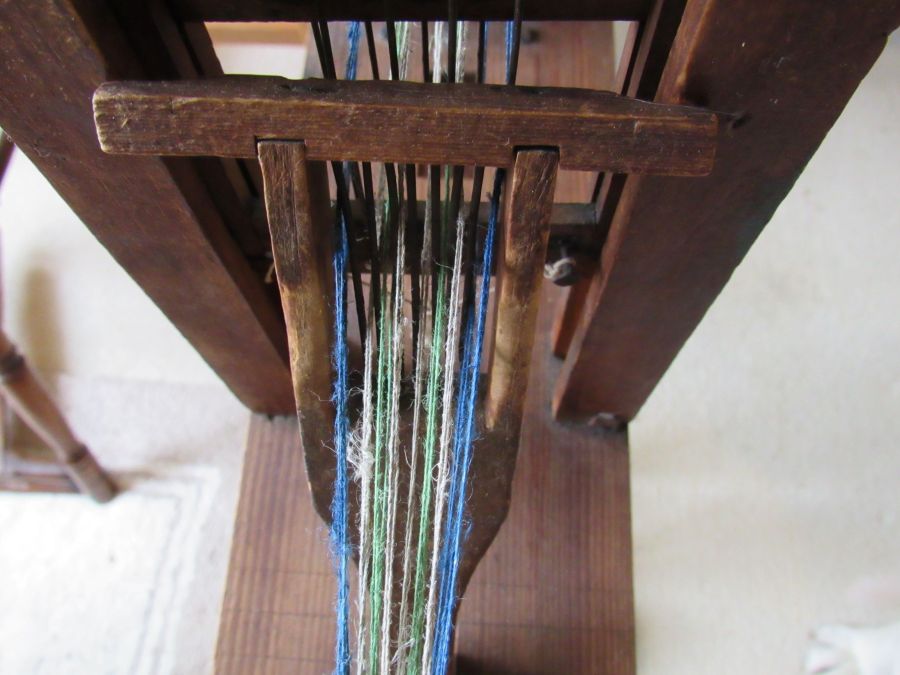
This ingenious little floor loom caught my imagination and started me down the road of tape loom weaving. Designed for weaving tapes or bands, this style was most often found in New England—often in table top versions with hand treadles.

This particular loom was part of the American Textile History Museum (ATHM) collection in Lowell, Massachusetts. After the museum closed in 2016, much of its collection went to other museums and historical societies around the country. For example, some went to Marshfield School of Weaving’s wonderful Textile Equipment Collection, cataloged here: /https://marshfieldschoolofweaving.omeka.net/ The items that didn’t find such homes, however, were sold, bit by bit, at a series of general antique auctions near Worcester, Massachusetts.

I drove more than five hours each way to attend several of the auctions, both excited and disturbed by them. It was a once-in-a-lifetime opportunity to see and buy an amazing variety of historic textile tools.

At the same time, it was deeply upsetting to see some pieces—especially those donated to the museum by collector Joan Cummer—garner little interest at auction, sometimes selling for give-away prices. And all the auctioned pieces, including Cummer’s collection, are now scattered to who-knows-where, provenance and historical significance lost.

Fortunately, all of the ATHM items are marked with a distinct set of acquisition numbers, leading with the year of acquisition, so they can be identified as once having a home there.

Although these items will no longer be available to educate and spark interest in the public, a group of people who cherish and use antique spinning wheel and looms attended the auction—in person, and remotely—determined to rescue as many as possible. Those items will be loved, appreciated, and, often, put back to their original use as marvelous working tools.

My first auction acquisition was a gorgeous great wheel—in perfect condition–that I had absolutely no intention of buying. It came up early in the auction and no one bid on it. No one. Silence. I actually felt insulted for the wheel, standing there in all its glory—unwanted. I couldn’t stand it and bid $10. Gavel down–it was mine.

This loom was a different story. I’m a weaver and small antique looms don’t come around very often. I was very excited to find two of these floor looms up for auction one night. The other had two foot pedals and more polished construction than this one. But I was quickly outbid on that one and had to nervously wait until much later in the evening for this one to come up. The late hour probably worked to my advantage and it was mine. My first, but not last, tape loom.

I had to replace the leather shaft holder—the original was there, but broken, and replace some washers and the wing nut on the warp beam.

It probably had a handle at the top that is now missing.

But other than that, it was all set up and ready to go.

There are two shafts and eight metal heddles, with a little beater and see-saw foot treadle.

There are tiny metal teeth and metal bar holding the front beam in place

and a small wooden slat in a slot held by a rotating tab to secure the warp.

The back beam has a leather piece nailed to the beam with a series of holes to secure the warp. I lashed a tiny dowel onto the leather piece, which allows me to easily attach more warp threads.

I have been using the loom mostly for weaving little tapes with odds and ends of my homespun linen from homegrown flax. A bit hairy on the loom, but they smooth out beautifully.

The loom naturally weaves a very weft-faced tape. So, I put multiple threads in each heddle and usually an alternating color suspended between heddles that I can manipulate to make a colored dash in the tape.

These looms are a bit of a mystery. They are thought to date from the late 19th century, with some speculation that they may have been used to make oil lamp wicks. That makes sense to me. They are very efficient and easy to use, enabling someone to crank out wicks quite quickly. And the loom design is perfectly suited for weaving a wick-style weft-faced band. I love using this loom. Although it no longer educates in a museum, I hope that by sharing it here, it may still serve to illuminate a little part of our textile history.


